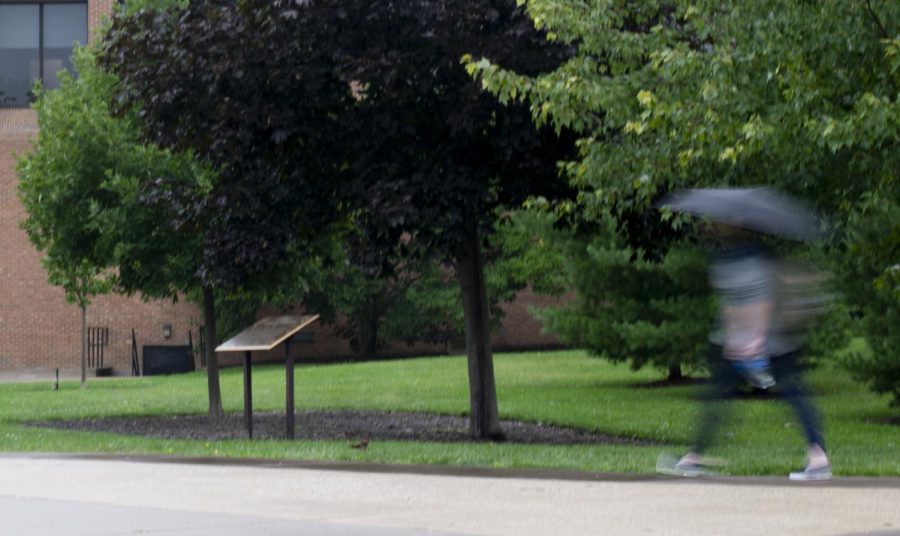Kent State’s ‘Three Trees’ serve as living memorial to 9/11 victims
September 12, 2018
Three maple trees grow in a mulched area near the Kent State Student Center, representing the three sites attacked on Sept. 11, 2001 — the World Trade Center, the Pentagon and Flight 93.
The plaque in front of the trees reads: “The victims, like the trees, were similar in many ways, yet their distinctive attributes contributed to the diverse American environment.”
Heather White, the grounds manager for Kent State, said the “Three Trees” memorial contains a red maple, a sugar maple and a Norway maple. Although each tree does not correspond to a specific site, the trees correspond thematically to the attacked sites.
“All three of the sites, while they’re connected due to the attacks, they’re all unique unto themselves,” White said. “And the three trees are connected within the family of maples, yet they’re all three very different.”
Mary Ann Pellerano, the assistant director of University Facilities Management at the time of the attacks, came up with the idea for the memorial. The trees were planted in 2002 by the grounds department.
The original location for the memorial was where the Student Center bus stop has since been built. The grounds department uprooted the trees, drove them to their new location and replanted them.
Two of the three original trees are still living. One died and was replaced around six or seven years ago.
The grounds department also administers the Planting Partnership, a program that allows people to buy trees in memory of or in honor of someone, which will then be planted on campus. Although “Three Trees” was not part of the Planting Partnership, White said the two are still conceptually related.
“The linkage to the Planting Partnership is we do memorialize people and honor people with living memorials, so I think it’s a nice way (to) honor someone,” White said.
The grounds department continues routine maintenance and pruning on the three trees, and White said assuming the trees live a typical lifespan, she expects them to live on for another 30 to 40 years.
Alexandra Sobczak is the art and architecture reporter. Contact her at [email protected].












